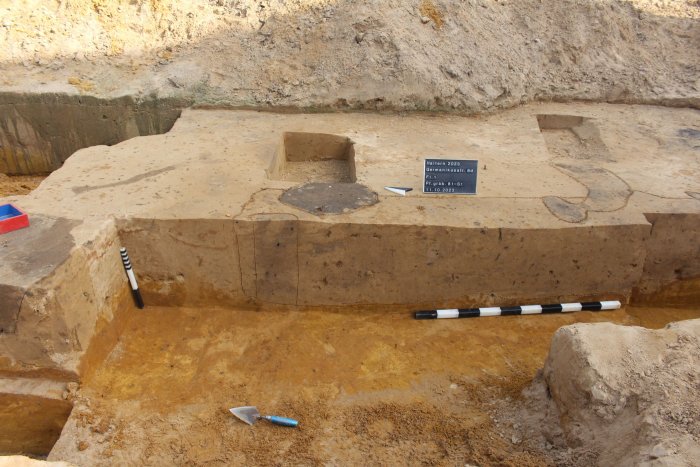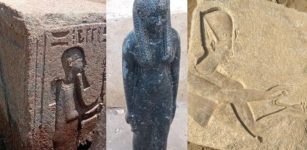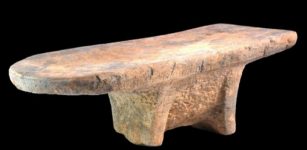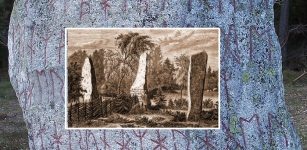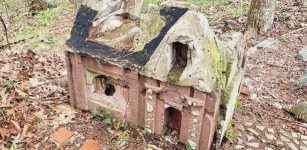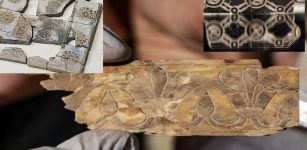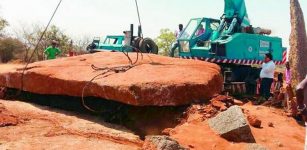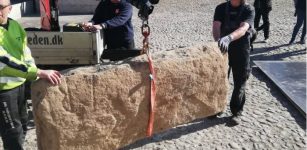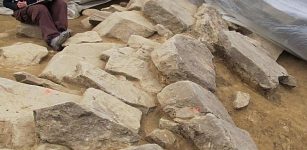Unusual Mini Temples Discovered In Ancient Roman Camp In Haltern, Germany
Conny Waters - AncientPages.com - Archaeologists excavating in Haltern, a town in North Rhine-Westphalia, Germany, say they have made a "sensational" discovery. On the former Roman campsite, they found remains of the foundations of two mini Roman temples and a sacrificial pit.
The building floor plans formerly belonged to rectangular cult buildings made of clay framework. In front of them was a small portico made of two columns.
Credit: LWL/C. Hentzelt
The finding is extraordinary because such cult buildings have never been found anywhere else within Roman military installations,” Dr. Bettina Tremmel from the Westphalia-Lippe Agricultural Association (LWL) said in a press release.
"The two rectangular cult buildings consisted only of clay frameworks, but they were modeled on the typical large podium temples made of stone that could be found in numerous Roman cities at the time of Emperor Augustus," Dr. Tremmel explained.
Unusual Roman Mini Temples Never Encountered Before
The remains of the building that have now been uncovered were first examined almost 100 years ago. To date, this unusual combination of Roman camp and cult buildings has hardly been noticed in science due to a lack of comparisons.
Archaeologists have already uncovered the whole floor plan of the Western cult building. The rectangular, 30 square meter wooden building had a five-meter wide entrance at the front. The front of the building was architecturally highlighted by two wooden columns on the sides.
The two mini-temples are located within a complex that covers 2,000 square meters. The structure was examined in 1928 by the then Westphalian chief archaeologist Professor Dr. August Stieren, who at the time came to suspect the building complex was initially used as a “schola,” i.e., a meeting house for military personnel. After some renovations, a troop workshop was also housed there, as evidenced by many tool finds.
Haltern main camp and the foundations of the cult buildings can still be seen as faint soil discoloration. The picture shows the cross section through a post trench and a post track.
Credit: LWL/C. Hentzelt
Lack of money and time forced Professor Stieren to abandon the archaeological examination of the site, but fortunately, a re-investigation has now been launched. During this scientific survey, scientists were able to detect a measurement error, and researchers could confirm the cult buildings are one meter farther south than previously assumed.
Between the town's almost identical mini temples, there was a ground-level pit surrounded by a small niche.
See also: Roman Naval Base of Haltern in Germany Was Rebuilt Four Times 2,000 Years Ago
"In our current state of research, the two small temples and the niche building with the burning pit are a unique building group within a Roman camp, and previous archaeologists have already puzzled over the function of these buildings,” says Professor Dr. Michael Rind, director of LWL archeology for Westphalia.
Forbidden Grave?
Next to the mini temples, there is also a circular ditch.
The depth of the small ditch and the Roman finds it contains speak against a Bronze Age dating and are more comparable to floor plans from the Roman burial ground in Haltern. However, the construction of a grave within a settlement was forbidden under Roman law, according to a statement from the LWL.
See also: More Archaeology News
“When you think of Romans in Westphalia, the first thing that comes to mind is complex logistics, large military facilities, and shiny equipment,” says LWL head of culture Dr. Barbara Rüschoff-Parzinger. “The beliefs of the Romans have so far played a subordinate role in our work. In the coming months, the mystery behind this unique finding on Germanikusstrasse will be investigated.”
Written by Conny Waters - AncientPages.com Staff Writer


